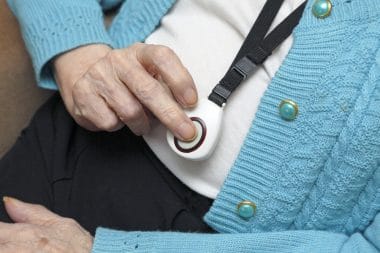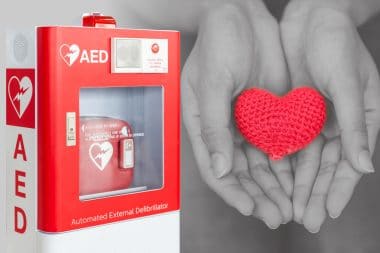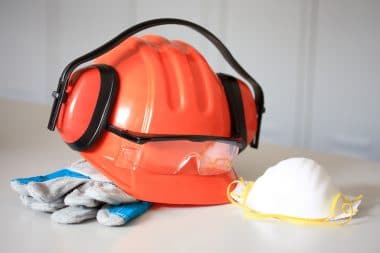Recently (early June 2019), in Pleasant Grove, Utah fifty people at a public swimming pool were exposed to chlorine gas. Twenty of those people had to be treated at the hospital. Most of those exposed were children.Â
In most cases the chlorine that is added to pools and drinking water to kill bacteria is safe. However, chlorine in gas form is very poisonous.
Chlorine inhalation toxicity can occur during routine attendance at swimming pools and in higher-level exposures at swimming pools when accidents occur with the pools purification systems.
What is Chlorine?
Chlorine is an element and can be found on the periodic table. Chlorine is a yellow-green gas at room temperature and has a pungent odor similar to bleach.
Chlorine is usually used in its liquid or powder form to treat swimming pools.
What is Chlorine Used For?
It is highly used in industry and in household cleaning products. It is used to make paper, pesticides and rubber. Chlorine has antibacterial properties, which means it kills and prevents the growth of bacteria. Some house hold products that contain chlorine include: bleaches, cleaning products, disinfectants, antifreeze and water purification tablets.
Most city water treatment plants use chlorine to purify drinking water. The concentration of chlorine in public drinking water is extremely low and not harmful to human health.
Public swimming pools use chlorine to sanitize and kill any bacteria that may be in the water.
Is Chlorine Gas Dangerous?
Chlorine in its gas form is poisonous. It was used as a chemical weapon in World War I.
There are 4 factors that contribute to the severity of chlorine poisoning:
- The amount of chlorine
- How close you are to the chlorine source
- The type of exposure
- The length of exposure
Breathing in high levels of chlorine gas causes fluid in the lungs or pulmonary edema.
Symptoms of Chlorine Gas Exposure
- Breathing Difficulties, Coughing, Wheezing
- Fluid in the Lungs
- Blurry Vision, Watery eyes
- Abdominal Pain
- Burning in the Nose, Mouth, or Eyes
- Nausea and Vomiting
- Blood in Vomit or Stools
- Bleeding from the Nose
Some people are sensitive and can get a chlorine rash from swimming in chlorinated pools or soaking in hot tubs.
If Exposed to Chlorine Gas Take These Action Steps
When chlorine enters the body through breathing, swallowing or skin contact it reacts with the water in your body (such as moist tissue in eyes, throat and lungs) to create acids. These acids damage all body cells they contact.
There is no antidote for chlorine poisoning, but chlorine’s effects are treatable, and most people recover. You may need hospital care to deal with some symptoms. The treatment goal is to remove the chlorine from the body as quickly as possible.
- Leave the area where the chlorine gas is and get to fresh air as quick as possible. If outside, at a pool for instance move away from the pool area and get to high ground, you need to find fresh air. Chlorine gas is heavier than air and will sink to low lying areas. If indoors, get out of the building.
- CALL 911 if you have been exposed to chlorine gas! You need professional medical care.
- Remove clothing and wash entire body with soap and water. Stash your cloths in a plastic bag if possible.
- If your eyes are burning or your vision is blurred, rinse eyes with plain water for 10 to 15 minutes. Remove contact lenses first. Do not put these same contacts back in your eyes.
- If experiencing respiratory issues you could need oxygen at a hospital or from an ambulance or emergency vehicle.
A hospital emergency department is the best place to treat people with chlorine gas poisoning. Chlorine poisoning can be severe even with proper medical care. You may need hospital care to support breathing.
Are Public Swimming Pools Safe?
Yes, but on occasion accidents have happened.
June 14, 2018: At least 35 people were exposed to a chlorine gas cloud in a San Jose, California, neighborhood pool. Some of the pool goers showed symptoms such as shortness of breath and vomiting, and a handful needed treatment at the hospital for upper respiratory problems
In 2012, there were 4,876 emergency-room visits due to “pool-chemical-associated health events” in the U.S., according to the Centers for Disease Control and Prevention.
Reviewing what to do if exposed to chlorine gas is a good idea especially if you like to hit the public pools or water parks this summer. Unfortunately, accidents do happen. Your chances of being exposed to chlorine gas are not high, but knowing how to respond if something happens will help you keep a level head.
Have a safe fun summer!
Chlorine Gas Poison & Public Pools #HealthStatus
Sources:
https://www.livescience.com/62839-chlorine-gas-cloud-swimming-pool.html
https://www.medicalnewstoday.com/articles/323700.php
https://www.health.ny.gov/environmental/emergency/chemical_terrorism/chlorine_general.htm
https://www.ncbi.nlm.nih.gov/pmc/articles/PMC3136961/
https://www.ncbi.nlm.nih.gov/pmc/articles/PMC4387786/
https://emergency.cdc.gov/agent/chlorine/basics/facts.asp









Reply